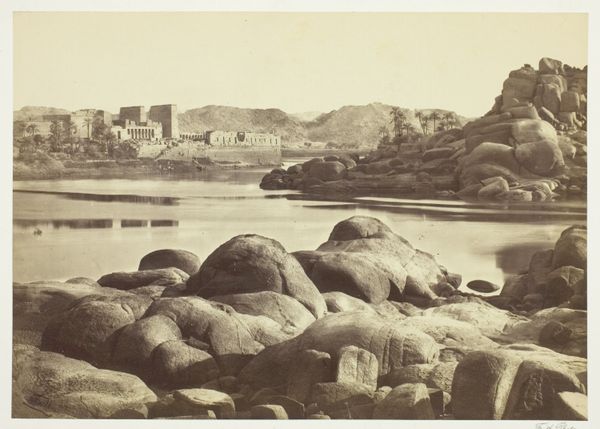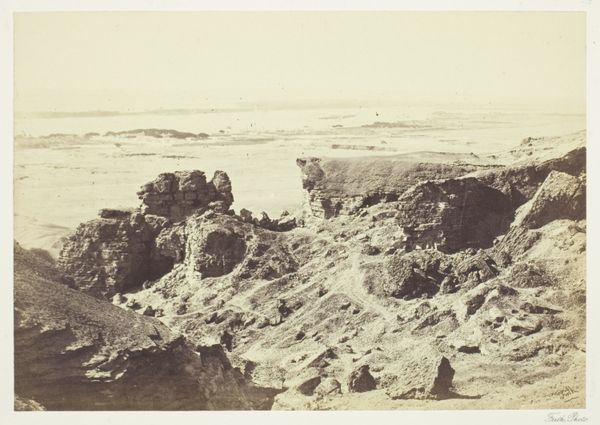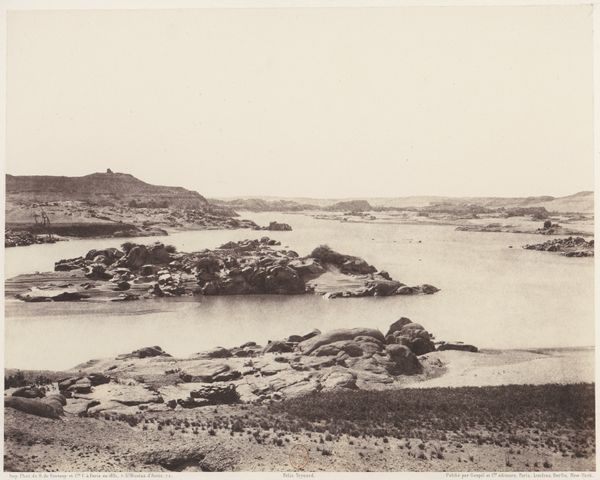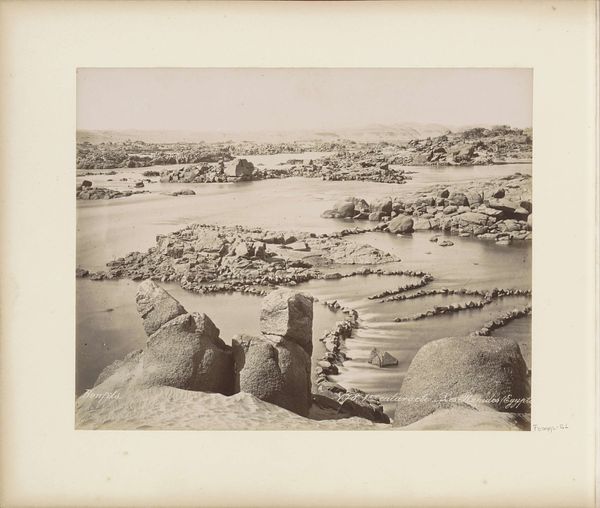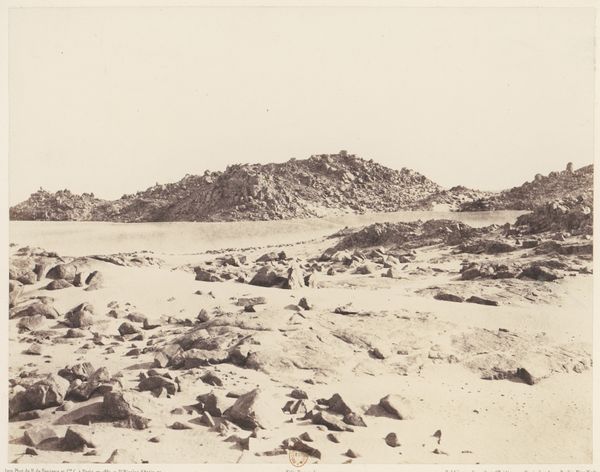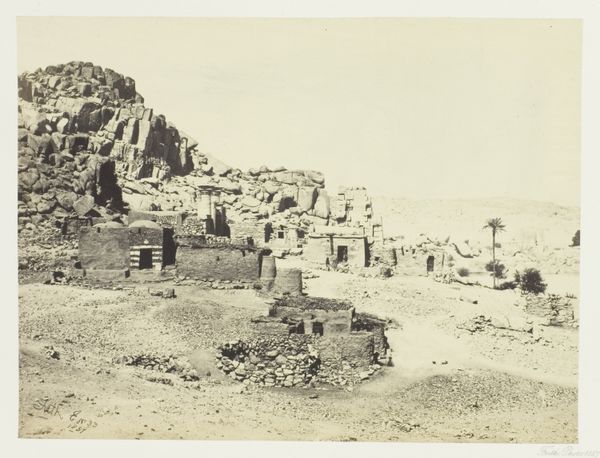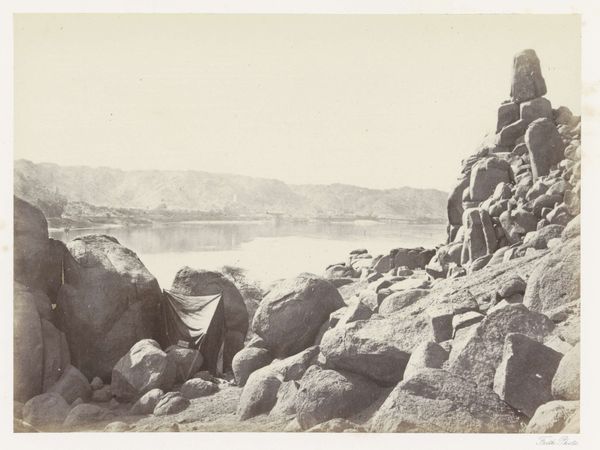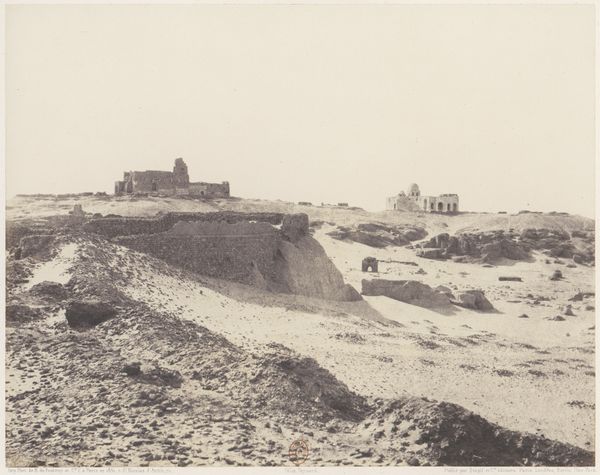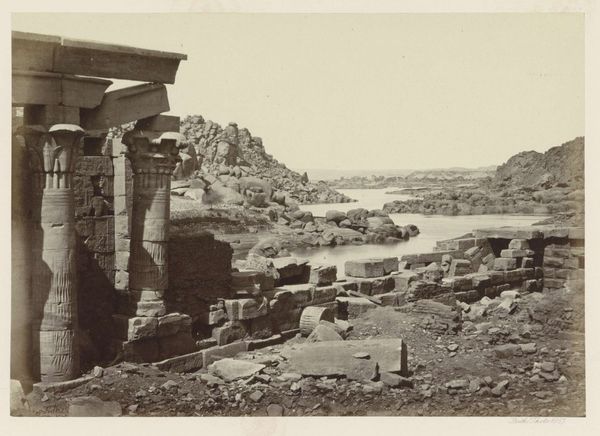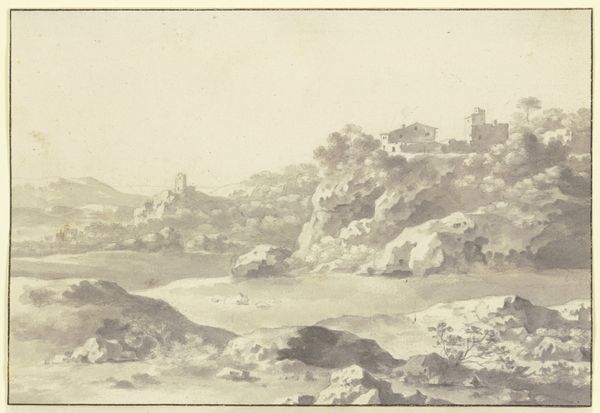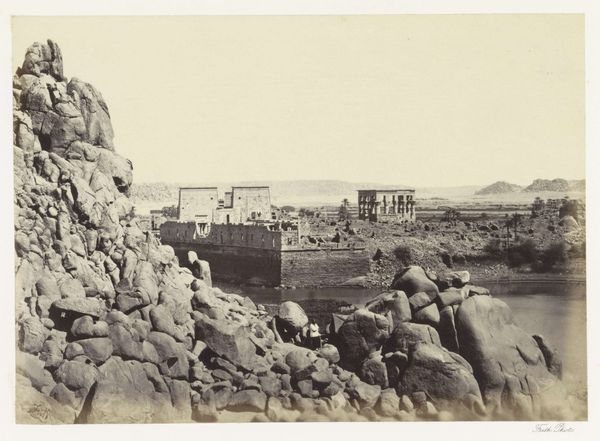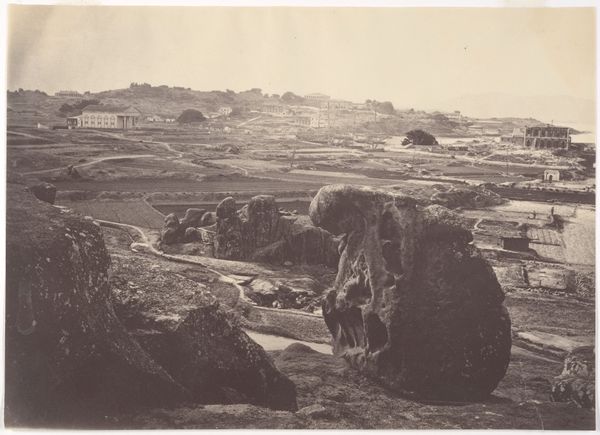
Dimensions: 16.3 × 23.4 cm (image/paper); 29.4 × 42.7 cm (album page)
Copyright: Public Domain
Francis Frith made this albumen print, "The Approach to Philae," using a process that was cutting-edge for its time. The albumen printing process, popular in the 19th century, involved coating paper with egg white and silver nitrate, then exposing it to light through a negative. The tonal range in this photograph speaks to the alchemical processes involved in its making. Light and shadow define the massive boulders and the distant temple complex, all rendered in exquisite detail by this early photographic technique. The very act of creating the image in this way imbues it with cultural significance, reflecting the Victorian era’s fascination with Egypt and its ancient monuments. Frith's commercial approach to photography – he ran a large-scale photographic firm – also speaks to the era’s burgeoning visual culture and the commodification of images. The labor involved in producing albumen prints, from the preparation of the paper to the final print, highlights the intersection of industrial processes and artistic vision. So remember, the photograph is not only a window onto a scene, but an object made in a particular time and place, and a reflection of the Victorian appetite for images.
Comments
No comments
Be the first to comment and join the conversation on the ultimate creative platform.
